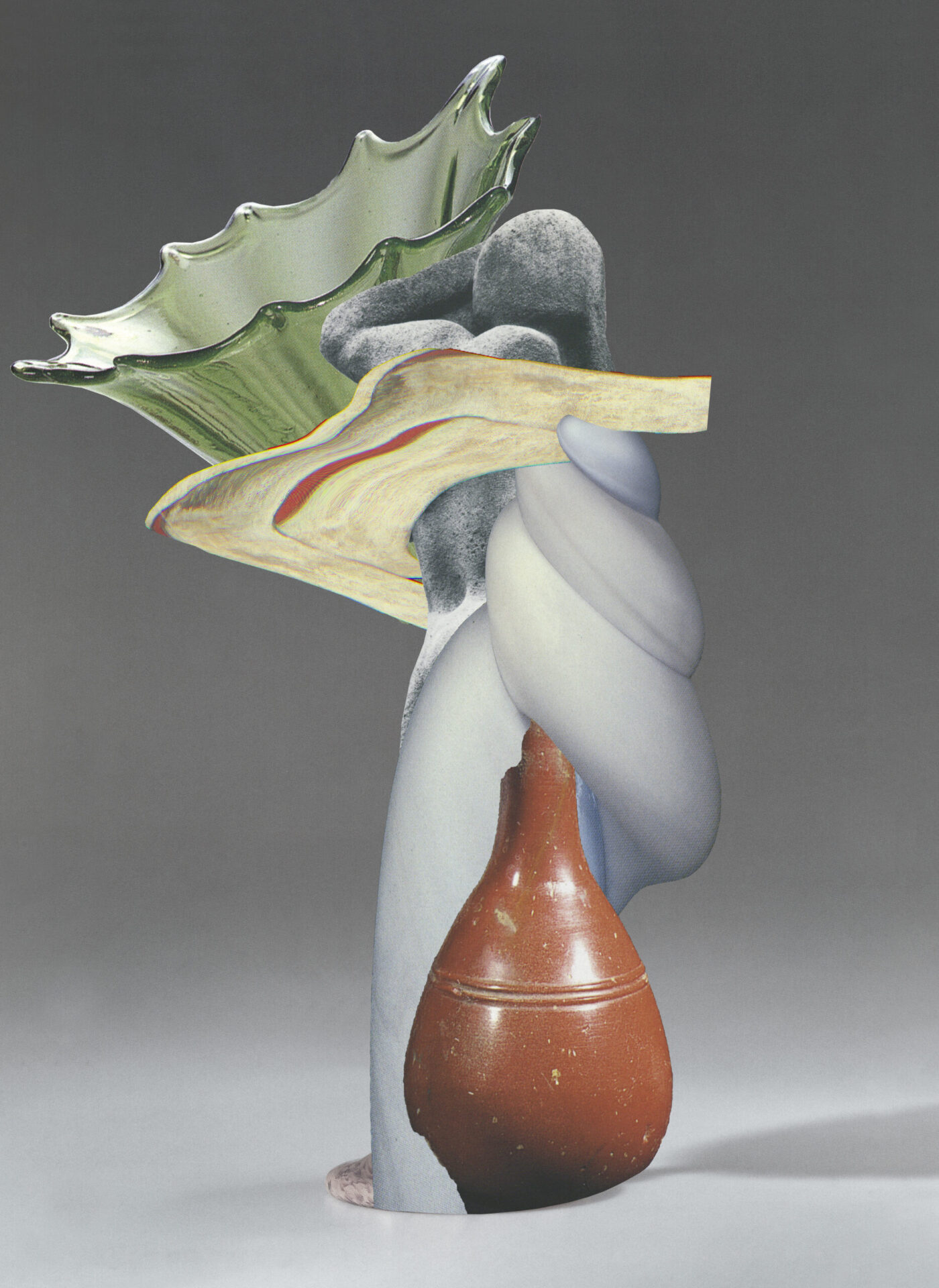A career in the arts wasn’t always in the books for Amsterdam-based collage artist Fenna Schilling. Having enrolled in the bachelor’s degree Philosophy, she temporarily put her collage work – something she had been doing on the side for many years – on the back burner.
After graduation, however, she realised that she felt a bit disillusioned, not knowing what to do with the abstract world she had been studying. Making collages was a much more tangible practice, so she applied to the Sandberg Institute art master’s and started to create works again, not only for herself, but also for friends in the music scene surrounding her. Today, her collage work has become her focal medium. By taking out images out of her monumental and ever-growing collection of old photo books, which she sources in thrift stores and on the streets, and then scanning them in, her work has become somewhat of a hybrid between analogue and digital forms of the medium. Through playing around with different textures and morphing familiar objects into abstract, manipulated shapes, her collages have assumed an otherworldly, dream-like quality.
Here she reflects on her unique practice, what parallels can be drawn between creating collages and composing music sets, and how she wishes to expand her autonomous work.
One of the first things that come to mind when seeing your work is Surrealist painters like Salvador Dalí. Is that an art movement that resonates with you?
It is definitely a reference I’ve heard before and I do feel inspired by Surrealism. Just like the movement, I like to create worlds and constellations that feel very familiar, but upon closer look, have something uncanny about them. I would describe my work as a form of painting, but instead of paint I use material that is readily available – paper, in this case.
By tweaking perception, shapes, colours, textures and proportions, I like to explore our human connection to objects, and to draw attention to the beauty of the mundane. What I hope to evoke in a spectator is that they feel inspired to observe and contemplate the world around them. A bit like a psychedelic trip in which you hyperfocus on the details around you.
You source your cut-outs mainly from secondhand books. What sparks your interest when you are on one of your treasure hunts?
A big source of inspiration are the encyclopedia-esque photo books from the 60s and 70s. Mind you: this was in the pre-internet era, in which you would have to browse books if you were looking for images. It is a bit sad because we see how these books have now become obsolete – their role has shifted. Nowadays a lot more attention goes out to the design of books, they are like a piece of art in their own right. But I love leafing through books from bygone decades that have less of a designer ‘stamp’ on them. To a degree, my collages are a way of preserving the beauty of catalogues.
I would therefore say that my work is more about the process than the result. Scavenging for secondhand books, feeling the richness of texture of the pages, assembling the cut-outs, that is ultimately what gives me the most joy.

